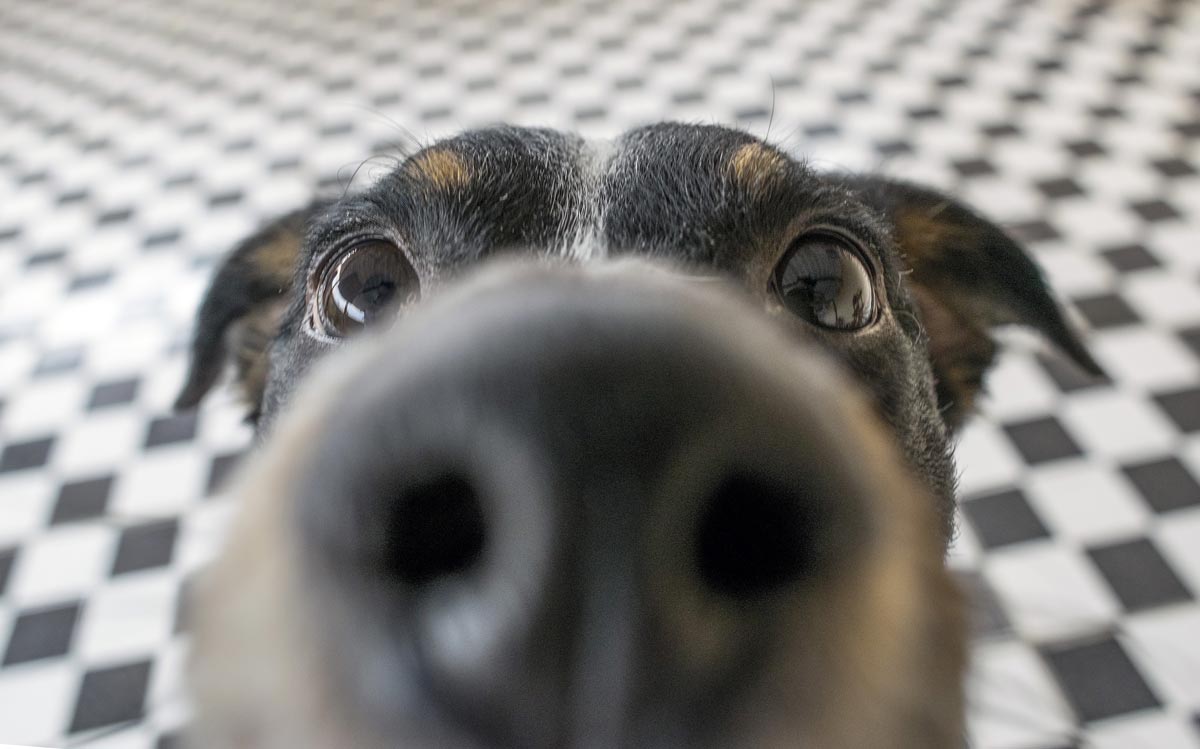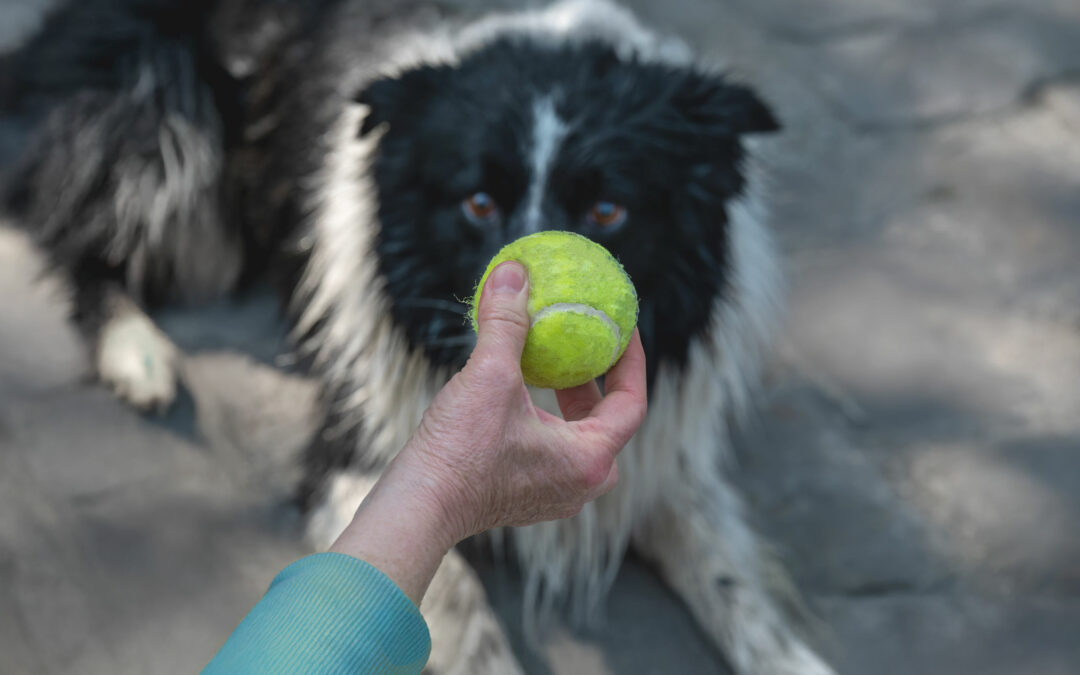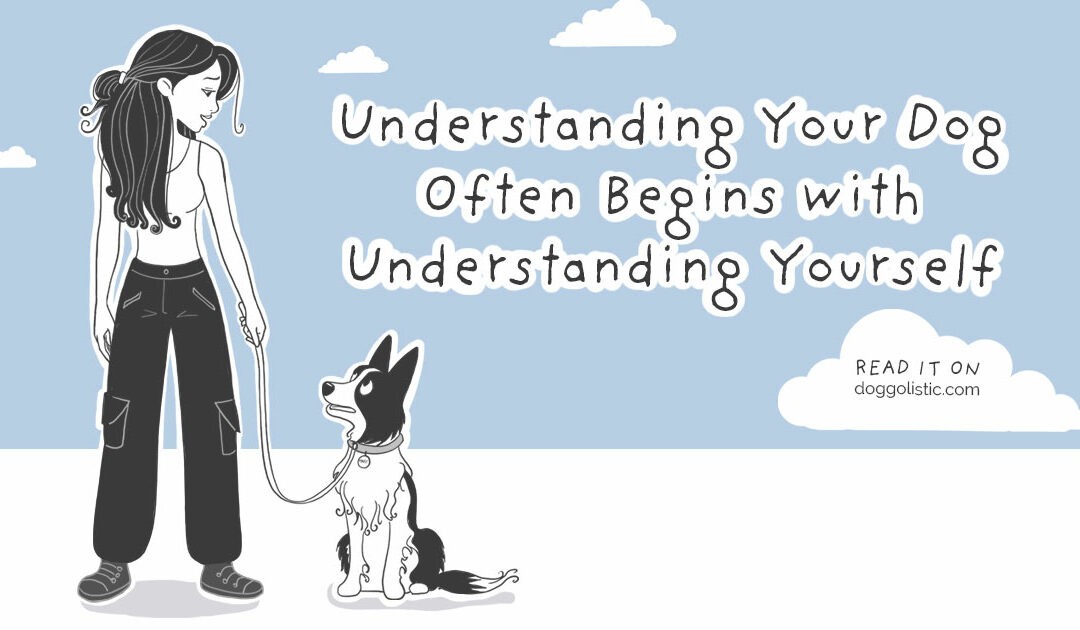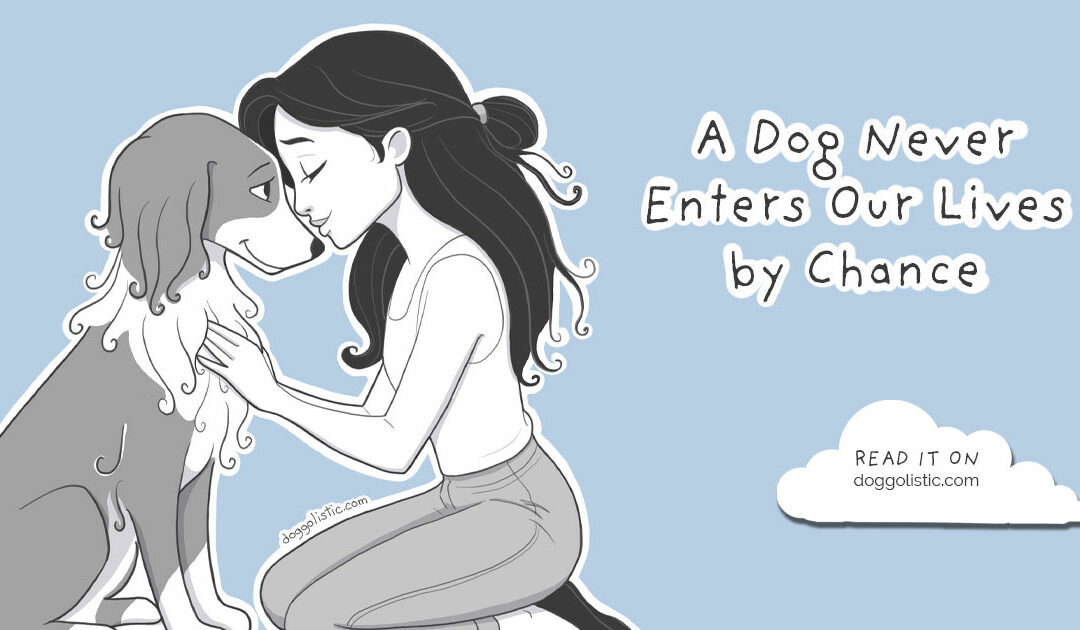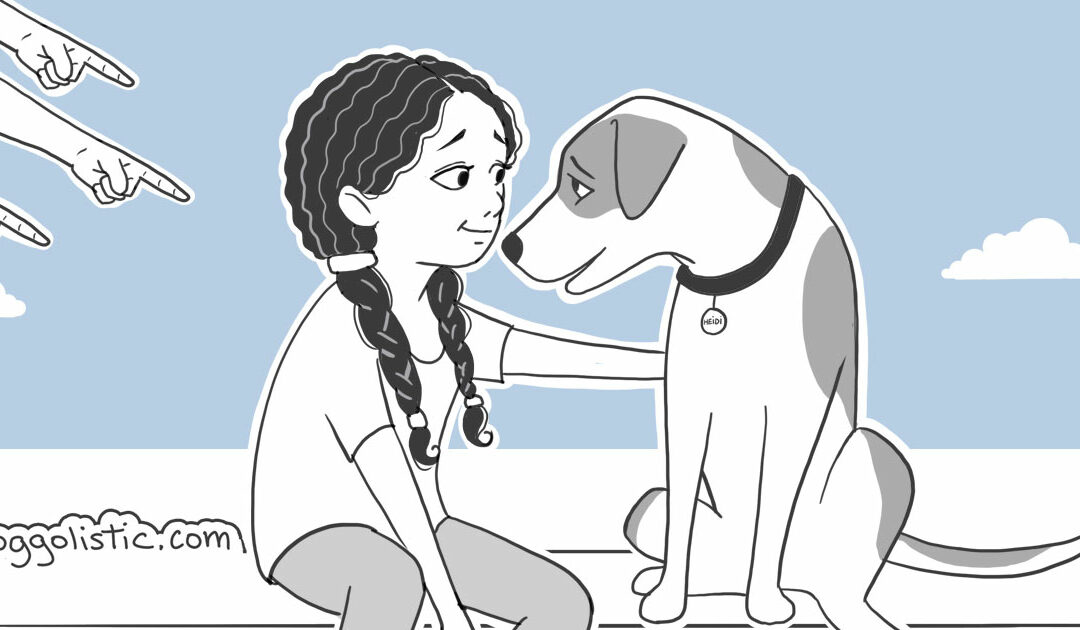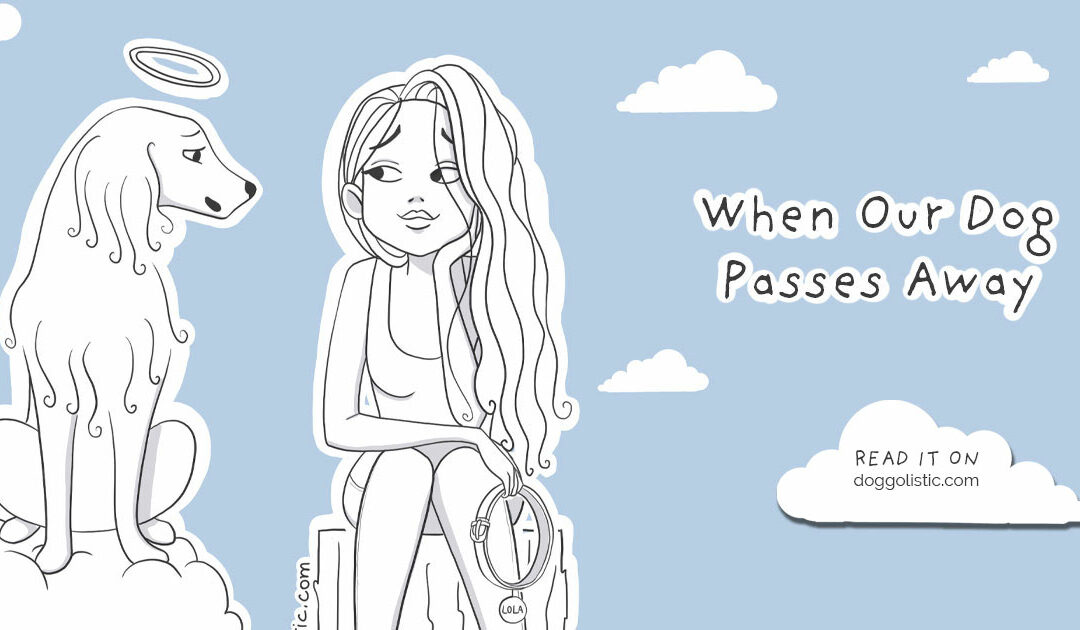Bonding with Your Dog: Connection Comes First
In dog training, we talk a lot about “focus”—that is, the ability (or lack thereof) to stay attentive despite distractions: crowds, cold weather, barking dogs two feet away. And yes, focus matters. But it’s not a technical skill, it’s a sign. It’s the tip of the iceberg. What lies beneath is the bond with your dog.
Before the Commands, Comes the Connection
Some people approach dog training the way they’d build IKEA furniture: step-by-step instructions, numbered parts, and one tiny Allen wrench. But dogs don’t wait around for instructions. They wait for connexion, structure, for reference points, for a shared language, quality time spent together. They’re not waiting to be told what to do. They’re waiting for someone to do it with. That’s not the same thing. In fact, it’s the opposite.
It’s a common and deeply human mistake to believe that loving your dog automatically means the bond is strong. It’s like a couple arguing, one shouting, “But I love you!” and the other replying, “How would I know? You never talk to me. You never spend time with me.”
You can love someone without creating a real bond. And that’s just as true with dogs.
The bond isn’t just that warm feeling you get when your dog falls asleep at your feet. It’s not the attachment that springs up after three days together because they’re cute and smell like toast. That’s affection. Affection happens on its own. A bond is something else. A bond is built.
The Bond With Your Dog : A Language You Build Together
A bond is a secret language the two of you create over time. It’s not spoken, it’s lived. It’s active, conscious, reciprocal. It’s built through quiet observation, mutual attention, small shared rituals, time spent doing things together.
It’s what makes your dog glance at you before crossing a street, keep his eyes on you even when there’s a lot going on around him, calm down just because you’re near, or trust you without needing convincing.
And like any language, fluency takes time. It’s not automatic. It’s like knitting with emotions, each shared moment a new stitch in the bond.
How to Know If You Have a Real Bond with Your Dog
- Your dog looks to you when unsure
- Watches your reaction before responding
- Comes back to you when something feels off
- Stays connected even with distractions around
- Trusts you when you offer something new
Focus and Attention: Signals of Trust, Not Training
When a dog looks at you, it’s not just because you’ve trained him well, it’s because there’s something alive between you. A dog that watches you isn’t trying to perform. He’s asking: How are you feeling? Can I relax now?
Attention vs. Obedience
An attentive dog isn’t just obedient. He’s connected. He chooses to stay close, not to please you or avoid a scolding, but because, in his eyes, you’ve become a fixed point in the chaos of the world.
Training a dog without a bond is like trying to make mayo without eggs, it’s just not going to hold.
The bond with your dog isn’t the extra ingredient, it’s the base of the recipe. Without it, all you have are separate pieces. Sure, dogs can follow commands perfectly and still feel completely lost. They can obey without understanding, follow without choosing, perform without joy. Dogs are brilliant like that. But without a bond, here’s what you risk:
- Automatic obedience that doesn’t last
- Stress hiding behind “good” behavior
- A lack of natural cooperation
- Inconsistent, unpredictable responses in real-life situations
- A dog who melts down when the unexpected hits
Training without a bond is a bit like learning to swim on a couch—you believe it’s working until the situation changes, and then you sink. The bond is what gives you flexibility, resilience, and an emotional foundation that feels safe for both of you. A dog who feels deeply connected to you will come back when he’s scared, search for your gaze when unsure, and relax just by being near you. It’s the difference that changes everything.
There’s no magic trick, no miracle cure
If you don’t make time for your dog, if you don’t have time for your dog, if the desire to actually be and play with your dog just isn’t there, then I have to ask: “Why did you get a dog in the first place? I mean, Lowe’s sells gorgeous ferns.” And then I’ll tell you this: you’ll never get anything meaningful from your dog — at least not peacefully or joyfully — without that time, without that presence.
Let me elaborate on the last point.
When the bond with a dog doesn’t exist or has been broken, some owners eventually give up on the harmony they once dreamed of. And when they do, they tend to take one of two paths:
The Gremlin Path
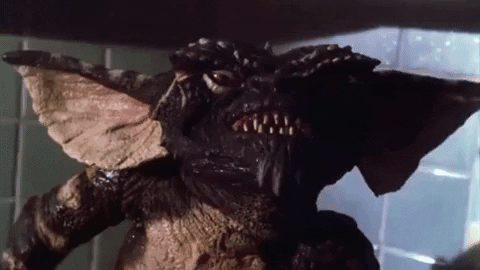
This is the human who starts yelling, flailing, snapping, trying to force their dog to listen (spoiler: it won’t work). They yank the leash like a maniac and get increasingly irritated and impatient (quick FYI: this spikes cortisol for both the human and the dog, and that’s a great way to cancer). The frustration builds. The bond weakens.
And one day, it peaks. Right there on the sidewalk, in front of strangers, in full public view, the human loses it. Now, it’s not just about the dog. Now it’s about shame. Rage. Humiliation. From here on out, every walk becomes a psychological minefield, a game of “How angry can I get without showing it?” The leash jerks get sharper, the words colder, the energy darker. What the dog starts receiving isn’t love, not even frustration. Just anger, sometimes even disgust.
That’s the kind of person who eventually mutters, “My dog’s just stupid,” because it’s easier to blame the animal than face their own inability to deal with what’s actually going on. (Spoiler again: the real issues? They’re almost always human ones.)
That’s also the kind of person most likely to “get rid of the dog” once they’ve been “pushed too far.”
The Eeyore Path

This is the human who gives up quietly, saying things like, “He doesn’t love me. He just doesn’t listen. That’s just how he is.” Or: “It’s just too much. Too hard. Too tiring. Life’s already overwhelming.” They watch their dog warm up to random strangers and think, “See? I knew it. I’m the problem.” So they settle. They stop trying. They just manage the best they can.
Each walk becomes a reminder that they’re not good enough and that their job now is to avoid triggering the problems, not fix them. Dog doesn’t listen? Oh well, don’t ask anything of him. Dog doesn’t come back when called? Fine, never let him off-leash again. Dog’s reactive? Just drag him 30 feet down the road until it passes. Dog bolts when let off leash? Either you chase after him while imagining the whole park judging you, or you just sit down and wait, defeated.
For this person, the dog becomes a life sentence. Human and dog, equally imprisoned in a relationship gone off balance. They usually won’t abandon the dog because, deep down, they either believe everything’s their fault, or that their dog is just “like that, he can’t help it.” Either way, they’re the ones who failed to do something about it, so they carry the weight.
This path, full of sadness, fatigue, and resignation, will always run alongside another path they could have taken: a path of connection, of calm, of trust. A path where neither human nor dog had to try so hard because they were simply in it, together, both free but still connected by something invisible but unbreakable: their bond.
Note: If you recognize yourself in Gremlin Mode or Eeyore Mode, please reach out to a trainer or behavior specialist. If you can recognize yourself in one or the other, you’re already halfway there. It happens! Starting off on the wrong foot, making mistakes, not knowing what to do, getting bad advice… What matters is what you do next, and it’s never too late to ask for help. It’s never too late to find your way back to that peaceful, joyful, deeply connected relationship you and your dog both deserve.
Building a Strong Bond with Your Dog: The Basics
Building a strong bond with your dog isn’t about doing more, it’s about being more. More present, more clear, more calm. It’s not something you learn in a group class with a ten-foot leash or by watching tutorials on YouTube. It happens in the kitchen, on the trail, at the foot of the bed, in the quiet in-between moments. It needs to be nurtured like a temperamental houseplant: a little water every day, not too much, but often.
1. Be consistent
If you say yes on Tuesday and no on Thursday, good luck. Dogs don’t get our exceptions. They need regularity to feel secure. And if mom says yes while dad says no, well, that’s another kind of problem.
2. Be calm
Your dog mirrors your inner state. If you’re anxious, he will be too. If you’re calm, he’ll borrow some of that steadiness. Bonus: he inspires you to grow into a calmer, better version of yourself.
3. Be readable
Your body speaks louder than your words ever will. Nonverbal cues and tone are the languages your dog truly understands—your breathing, your posture, your gaze, your energy, the rhythm and tone of your voice. That’s what he’s picking up on. And often, he reads you better than you read yourself.
4. Be present
You don’t need to go on three-hour hikes or sign up for dog yoga. What your dog really needs is you, fully present, truly there. No phone, no rushing, no multitasking. Just you and them, sharing the moment. Being. Together.
This isn’t about performance or perfect training sessions. It’s a daily choice to build something real. It’s about creating a space where your dog can spend quality time with you, can count on you, and where you both get to exist, fully and peacefully.
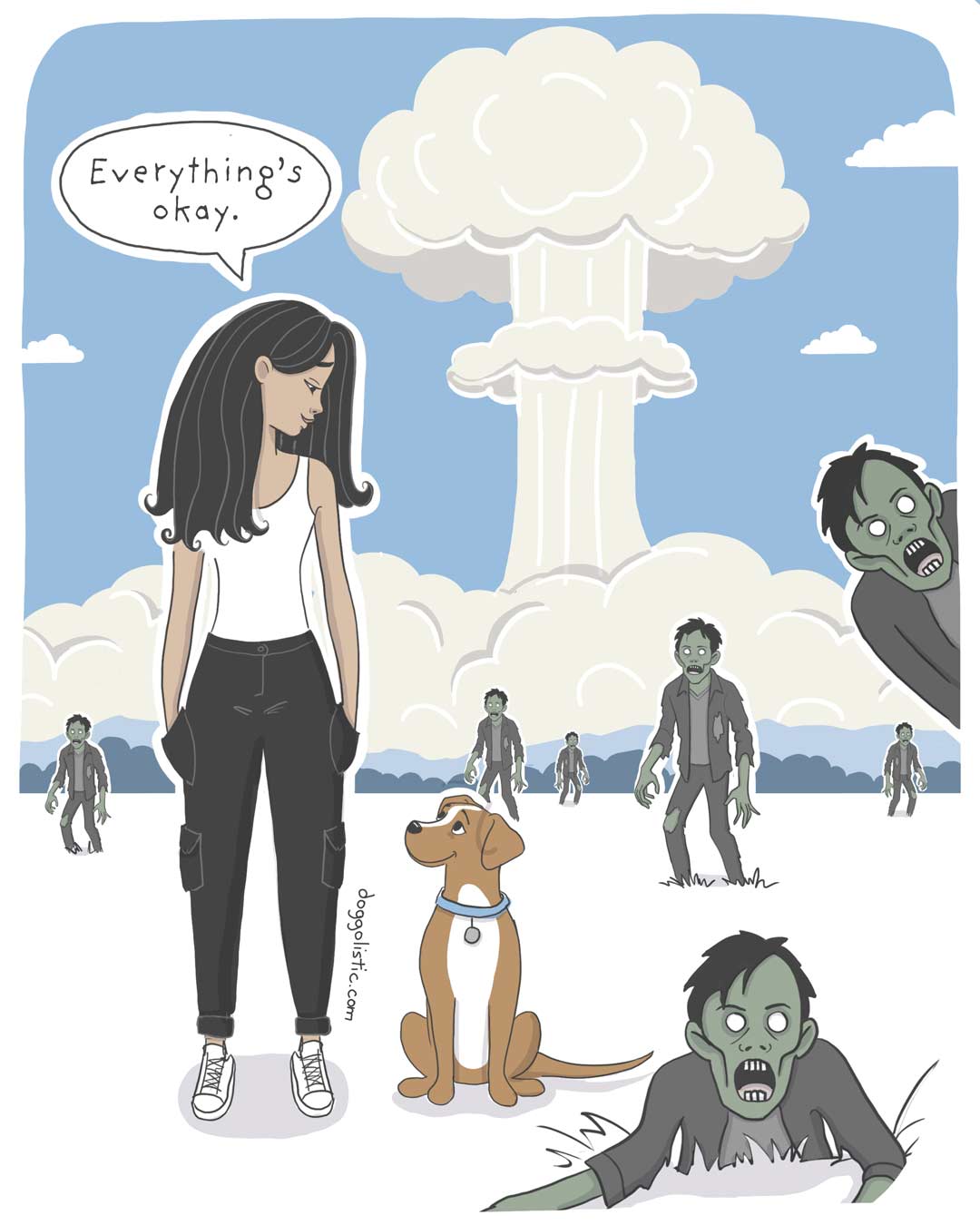
The power of connection! OK. Maybe I’m exaggerating. Just a little.
At the Root of Everything: Learning Through Play
One of the best ways to build a bond with your dog is by spending time together.
But for some people, “spending time with your dog” is vague. What does that even mean?
“I take him out before work, he hangs out by my feet when I’m working from home, we go for walks on the weekend, he watches TV with me… I am spending time with him, right?” Not quite.
It’s okay not to know. Maybe this is your first dog. Maybe no one has ever taken the time to explain to you what dogs truly need. Maybe, like many people, you grew up in a home where a dog was “fine” as long as it had food, a place to sleep, and a patch of grass to pee on.
Sadly, this widespread idea—that as long as a dog’s basic needs are met, it must be happy—is responsible for many of the struggles we see between dogs and their owners. “He doesn’t realize how lucky he is. He could be living on the street, the ungrateful brat!” Yeah… no. He doesn’t realize that. He’s here. With you. Right now.
Passive Neglect
We now know that a dog’s intelligence is roughly equivalent to that of a 3-year-old child. So imagine someone saying about their 3-year-old: “I feed him three times a day, help him go potty, toys are lying around, and the rest of the time he just chills in a corner. He’s doing great!”
Aside from the fact that this kid would probably grow up to be a serial killer, how could we expect anything from him? That he’d love us? Understand everything we say, the rare times we speak to him? Be well-behaved, calm, obedient, happy?
If you’re not spending meaningful time with your dog, don’t expect anything from him, because you’re teaching him not to expect anything from you.
Shared Time and Connection: Way More Than Just Fetch
So, what does it mean to spend time with your dog?
Sure, it can mean hanging on the couch together in the evening watching TV. Yes, it can mean a quiet walk through the woods, soaking in the moment. But that only works if you’ve already taken the time to connect with him. And since you can’t connect with a dog by going to the movies, out to dinner, or playing board games, what do you do? You play with him. But not just anything, and not just any way. The kind of play that benefits both of you, and therefore strengthens your bond.
Spending an hour throwing a ball or stick to exhaust him or ten minutes encouraging him to go wild tugging on a rope with no rules or rhythm? That’s not meaningful play. That’s a recipe for problems: ball obsession, overstimulation, trouble winding down afterward… all of which weaken your connection and lead to disobedience.
How to Play Well With Your Dog
To play well with your dog, you need:
1. Time
2. Joy, exchange, communication, and structure.
Blending training and play is the most effective way to foster genuine connection. A dog who sees that their human is there to spend time with them on purpose, to connect, to play, to teach, to engage in structured activities like trick training, tug with rules, scent games, Treibball, canicross*… that dog will know, at that moment, that he is the center of his human’s world, just as his human is always the center of his. That dog will bloom feeling seen, valued, safe, and loved.
We’re not talking about turning your dog into a little soldier or a circus performer at all costs. I truly believe dogs deserve more than being trained just to show off. What we’re talking about here is fun, joy, and real connection — through a language you both understand: play.
And then comes the everyday stuff, where everything else happens.
*Make sure you pick something your dog actually enjoys and is suited for.
12 Little Exercises to Build the Bond with Your Dog Every Day
These aren’t requirements, they’re invitations. Opportunities to reconnect, understand each other better, and establish reference points that make all the difference when the world gets loud or confusing.
These are tools, not rules. They’re possible paths toward a relationship that’s smoother, softer, and stronger.
Think of them as shared moments, little rituals. No pressure, no “shoulds”, just the simple desire to truly find each other.
1. Shared gaze and the magic hand
This is that quiet moment when your dog looks at you without being called. When he seeks your eyes just to make sure everything is okay. It’s not a training trick, it’s an invisible bridge between you.
How to do it:
Hold a treat and slowly bring it up near your eyes.
Wait. Even half a second of eye contact deserves a reward.
The moment your dog looks at you—timing is everything—mark it with a “Yes!” or a click (if you use a clicker), then give a treat with your other hand.
Repeat calmly.
Gradually increase the time before the reward. Once your dog can follow your hand to your eyes five times in a row without hesitation, move on to the Magic Hand game.
2. The Magic Hand game
This simple game builds self-control, but more importantly, it teaches your dog that waiting, watching, and connecting with you are worth more than impulsive action. No commands, no corrections, just presence and patience.
How to do it:
Hold a mid-value treat (like a piece of kibble) in your hand and close your fingers around it.
Let your dog sniff, nudge, or paw at it. Don’t react.
The moment he stops pestering your hand and looks at you instead, mark it with a “Yes” and give him a higher-value reward (like cheese) from your other hand.
Repeat several times.
Some dogs take longer, be patient. 🙂
Once your dog has understood the game and is looking at you at least five times in a row without hesitation, wait for them to look at you again. The moment they do, add the verbal cue “Look at me,” mark with a cheerful “Good!” or “Yes!” and reward. Repeat several times.
Once your dog consistently responds to the cue, say “Look at me,” then wait for eye contact, then mark and reward as soon as it happens.
Generalize the behavior by gradually adding distractions: hide your hand behind your back, raise it above your head, practice in the hallway or in the backyard, then move to a quiet outdoor space, and eventually to more stimulating environments
What this creates:
Patience, trust, and a new kind of communication. A kind of mutual respect that says, “I see you, and I’m waiting.” Your dog learns that looking at you is always a good move, even without being asked, and that calmness and connection lead to better outcomes than agitation, often with an even better reward. As for you, you learn to look at your dog with intention.
When should you introduce the “look at me” cue?
Only when your dog is already offering eye contact naturally, in a calm and relaxed setting. The cue should name a connection that already exists—not force a behavior. You introduce it when that quiet moment of shared attention feels natural, easy, fluid. Only then do you give it a name.
This applies to every single cue you ever teach your dog.
3. Connect before going out
Before stepping out into the world, leash in hand, door open, pause for a moment. Just a moment to meet each other’s eyes, to say: “We’re going together.”
How to do it:
Say your dog’s name softly.
Wait for eye contact. Doesn’t need to last long, just a look that says “I’m with you.”
Smile (yes, really, it’s good for both of you, you’ll see 😊), then reward with a gentle pat or a warm and calm phrase like “Good boy” or “Let’s go” and open the door.
What this creates:
This tiny pause sets the tone for a walk that begins in calm and connection.
4. Pause before the meal
Mealtime is a big deal, full of anticipation and excitement. Adding a brief moment of eye contact brings awareness to that excitement and says: “I’m here. We’re doing this together.”
How to do it:
Hold the bowl or set it down, but don’t give it right away.
Wait for your dog to glance at you. Even a quick look counts.
Once he does, calmly place the bowl down.
What this creates:
This isn’t about obedience or control. It’s a way of gently weaving connection into everyday life.
Subtle variation:
You can also place your hand on the bowl, the kibble bag, or the cupboard door and wait for that curious “What are you doing?” look. That glance is already a conversation.
5. Before getting in the car
Same idea. Just before jumping into the trunk or the seat, wait for that small glance. It’s not about asking permission, it’s about checking in: “You good? I’m good. Let’s go.”
6. Out on a walk
You’re walking, he’s sniffing, you’re both in your rhythm, and then suddenly, your dog looks at you. Don’t miss that moment, it’s a gift.
How to do it:
As soon as he glances your way, reward it, even from a distance. A kind word, a tossed treat, or just a quiet “Good boy.”
What this creates:
You reinforce your dog’s habit of checking in without being prompted. It becomes second nature to stay connected, even from afar.
7. Walking together
Walking together doesn’t mean walking heel-to-heel like a soldier. It means finding a shared rhythm, a breath you move in together.
How to do it:
Walk in a quiet area with a loose leash.
Each time your dog adjusts to your pace or glances at you, mark and reward.
Change direction from time to time, gently, without tugging. Let him choose to follow.
What this creates:
A two-way movement, where your dog follows not because of the leash, but because being with you just feels right.
8. Freedom with connection
Letting your dog run, sniff, and explore doesn’t mean losing control. It’s a way of saying, “You’re free, but I’m still here.” And sometimes, in that freedom, he’ll come back to you, just because he wants to. If that’s not the purest sign of love and trust, what is?
How to do it:
Use a long lead in a quiet area.
At some point, stop.
Don’t say anything. Don’t call your dog. Just watch.
Let him sniff the air, investigate the grass, watch the birds.
When he eventually turns around and comes back to you on his own, welcome him softly, no fuss, just calm joy.
Offer a treat, a gentle touch, or a kind word. The treat isn’t the point.
Then let him go.
What this creates:
A bond without pressure. Trust without commands. A shared moment of connection in the middle of freedom.
9. The trust touch
Touch is powerful. Done right, it can ground, calm, and reconnect, but it can also overwhelm, especially for sensitive or reactive dogs. When done with care, outside of any excitement or pressure, it becomes a tool for deep emotional bonding.
How to do it:
When your dog is calm, place your hand gently on his body—on his side, chest, or ears if he enjoys that. (It’s a great moment to revisit dogs’ body language and communication cues 😉)
Speak softly, or not at all.
Breathe with him.
Observe his body language: is he relaxing, or tensing up?
Adjust to what he’s telling you with his body.
What this creates:
A physical and emotional anchor. A safe place. Your dog learns your touch is steady and comforting, and you learn to listen to him in a new manner.
10. Quiet presence
You don’t always have to do something. Sometimes, just being together is enough. Dogs often understand this better than we do.
How to do it:
Sit with your dog in a quiet spot—on the couch, in the yard, in the park.
Don’t give commands. Don’t talk.
Just be there. Breathe.
If he comes close, place your hand gently on him, but don’t pet.
Let the moment exist.
What this creates:
A calm, shared space where nothing is expected. A quiet reminder that simply being together is meaningful.
11. Singing in the rain (or talking through stress)
When something potentially stressful appears—a dog, a loud noise, a bike—your emotional state becomes your dog’s weather report. He’s watching. Listening. Analyzing. One of the best things you can do in those moments? Speak softly and naturally, like nothing’s wrong.
How to do it:
As soon as you notice a stressor ahead, start describing what you see in a calm tone: “There’s a woman walking by… she’s got a red bag… her coat’s flapping in the wind… that’s a Labrador coming, he’s sniffing the ground, on a leash…”
Keep your tone soft and steady.
If you love music and see it coming soon enough, try humming a lullaby as you walk. Keep humming through the moment.
The key is to maintain your pace, posture, and tone without interruption.
What this creates:
It’s not the words that matter; it’s the tone. You become a calm, predictable narrator. Through social referencing, your dog reads your mood and realizes: You’re okay, so I can be okay too.
This kind of emotional regulation by proxy soothes, reassures, builds trust, and ultimately strengthens the bond between you. A bond built on attentiveness, consistency, and the ability to lead, even in uncertainty
12. Focus in the face of distractions
Once your bond is strong in calm settings, you can gently stretch it. Not to test it, but to strengthen it. Helping your dog stay focused in more stimulating environments prepares him for the real world.
How to do it:
Start in a quiet place, in your backyard, for example. Ask for a “look at me” and reward generously.
Gradually introduce light distractions: a toy on the ground, a sound in the distance (ask someone to drop something on the floor in the kitchen, to suddenly talk loudly…)
Each time your dog chooses to focus on you instead, mark and reward.
Slowly increase the challenge: a dog passing by, a walk in town, a busier space.
What this creates:
Your dog learns that even when the world gets noisy, you remain a point of safety. He chooses to check in with you, not because you’re calling him constantly, but because you’re there: steady, clear, trustworthy, and kind.
It’s not magic, it’s connection
Training isn’t just about commands, and a good relationship with your dog isn’t built on obedience alone. At the heart of it all lies the bond: the quiet, mutual understanding that makes everything else possible.
You don’t need to be perfect. You just need to be present. To notice the small looks, the shared pauses, the silent agreements. Your dog isn’t waiting for you to become a better trainer, he’s waiting for you to be his safe place, his compass, his partner in this strange, noisy world.
When that bond is strong, everything becomes easier: learning, walking, navigating stress, enjoying each other’s company. It’s not magic, it’s connection. And it grows in the everyday moments. In the eye contact before a walk. In the pause before a meal. In the quiet joy of just being together.
So don’t worry about doing it all “right.” Focus instead on doing it together. And when in doubt, go back to the simplest truth: your dog doesn’t need you to be perfect, just present. 🐾
Important:
Never work on a new step in a stimulating environment until you’ve gotten a clear, repeated “yes” from your dog in a calm one.
This applies to every single exercise you ever teach your dog.
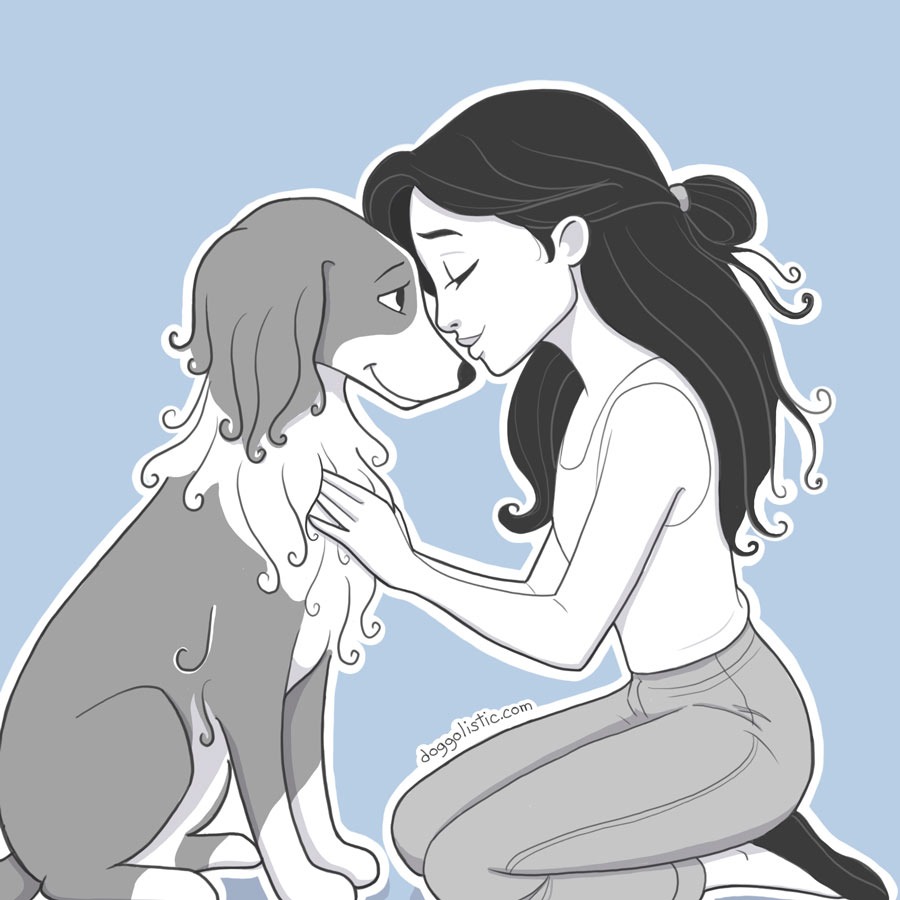
As a dog behaviorist and trainer, I work on the subtle bond between humans and dogs — with all its beauty, its wobbles, and its life. I help humans better understand their dogs — and sometimes, just a little, the other way around, too.

